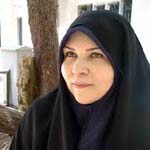An Analysis of Pattern Making, Representation of Details, the Third Dimension of Objects in Iranian Paintings based upon the Islamic Optics
Author(s):
Article Type:
Research/Original Article (دارای رتبه معتبر)
Abstract:
The paper in hand, aims to answer a number of questions regarding formation of some fundamental frameworks of Iranian miniature paintings and describe some of the apparently paradoxical issues which are significant in the basis of this artistic expression. As an instance, it has been tried to figure out the thought based upon which the pattern making became possible in these paintings. By pattern making, we try to refer to the fact that based on some art historians; Iranian painting is formed by a series of repetitions of similar patterns. To these scholars, the facial features, physical positions and a lot of other characteristics are not very different from one and other. These common and repeated forms can be found in the paintings ranging from Ilkanids to Herat school (Timurid), and even Safavid era. Art scholars call this repetition of same forms and moods, pattern making. Some moved further and attributed this to an assumed inability of Iranian artists in representation and creation of new and innovative forms or even their lack of creativity which forced them to follow the exact path of their masters. It is worth mentioning that there is also a number of other reasoning mentioned in order to define and explain this method. For example some claimed that Iranian artists were after depicting another world, apart from the mundane, everyday universe: a universe in which people’s facial differences do not exist. These patterns can be explored and analyzed in the following groups: Patterns related to human moods such as bewilderment; the ones connected with types e.g. kings, sufis, musicians, or servants as some examples, as well as the patterns which convey conceptual messages. For instance the biggest figure in size, represents the character of the highest social, political, or religious ranking. Therefore, unlike the second type, these patterns do not merely represent one specific type. Meanwhile, other questions have been dealt with. What is the logic behind representing the objects with such minute details while the people were drawn based on the exact patterns far away from realism for many centuries? Why do we simultaneously observe representation of some objects in two dimensional and three dimensional ways, even in one piece of art work? In order to answer these questions, there would be no choice, but understanding the optics as it was known by the people contemporary to these art works. To do so, the paper tries to focus on some parts of Al-Manazir written by Ibn Al-Haytham. Abū ʿAlī al-Ḥasan ibn al-Ḥasan ibn al-Haytham (Alhazen) who is known by some as the father of modern optics, was born in Iraq in c. 965 (c. 354 AH) and passed away in Egypt in c. 1040 (c. 430 AH) and his most significant book in the realm of the optics is Al-Manazir. Since this book is the most comprehensive work in Islamic optics, and the majority of the other optics-related works, written in the following years, have roots in this single book, the focus point of the present paper has been placed on Almanazir based on which it has been understood that mind (الممیزه) and repeated visual signs play a significantly important role in conceiving the objects we see. Based on the same view point and the objective of miniature painting (communicating primary and secondary messages), pattern making, and representation of decorations on the objects as well as showing the third dimension have been elaborated. Pattern making and detailed presentation of decorations, both guaranteed conceptual signs’ existence (الامارات) and used to establish a known coding responsible for communication between the artist and his audience. The audience contemporary to the artist himself, because of the repetitions of these cods existence in other art works could distinguish them as soon as they saw them. This was important since unlike modern times, at that moment, communicating a singular and unique message was crucial. These messages were responsible to do a two sided task; one to visualize the story narrated in the book and second to imply political and social events. Presenting the third dimension was also allowed only in cases which did not disturb representation of these visual codes. This research has a historical approach towards reading Iranian miniature paintings. The scientific issues are discussed in a descriptive analytical method and the artistic parts have been dealt with in a comparative way. The paintings which have been discussed here are chosen selectively from the existing pieces left from 13th to 16th centuries due to the fact that unfortunately, not many manuscripts have been left from the period prior to the 13th and the ones produced after 16th century were greatly influenced by western style of painting and gradually detached from their original traits. The art pieces, explored here, at least present one of the points mentioned earlier.
Keywords:
Language:
Persian
Published:
Journal of Theoretical principles of Visual Arts, Volume:3 Issue: 2, 2019
Pages:
5 to 20
https://magiran.com/p2021801
مقالات دیگری از این نویسنده (گان)
-
A Symbolic Reading of Geometric Arabesques in Damask Brocade FabricBased on Erwin Panofsky’s Theory
Mona Alghabra, Zahra Rahbania *
Journal of Graphic Arts and Painting, -
Bīstūn or Taq-i Bostān? The Roots of Farhād ‘s Bas-Relief Representation in Illustrated Ḵamsas (Quintet) with a Focus on Early Islamic Writings
*
Journal of Rahppoye, Hekmat-e Honar, -
Clive Bell’s Aesthetic Theory of Significant Form in the Light of Piet Mondrian’s Neo-Plasticism
Ali Fallahzadeh *,
Journal of Fine Arts,



